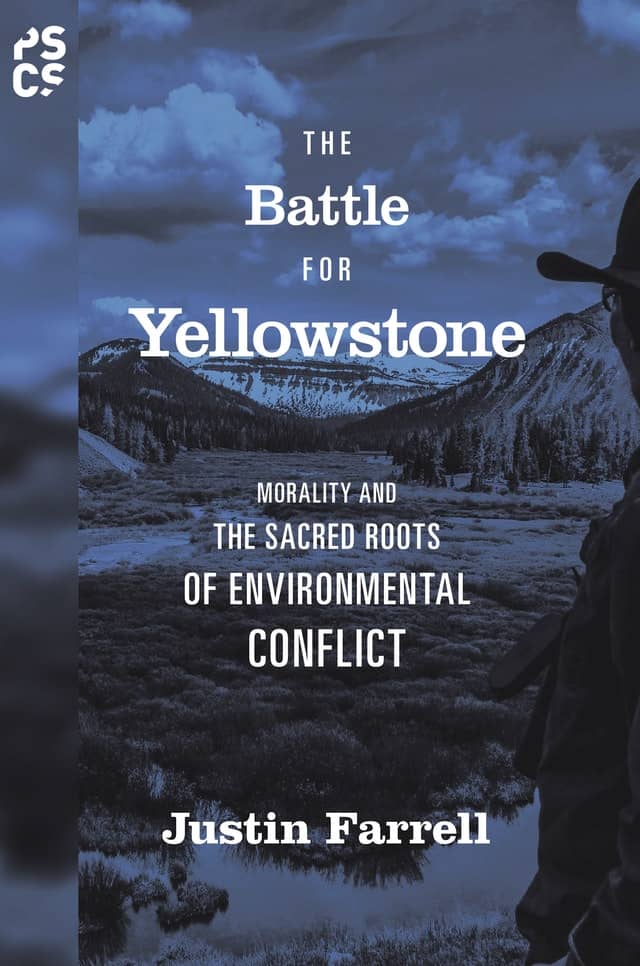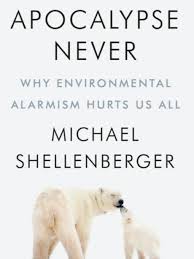Let’s start the discussion of Justin Farrell’s book The Battle for Yellowstone: Morality and the Sacred Roots of Environmental Conflict. It’s a long book, and is written with some academic-ese, and there are treasures throughout. I’ll start with a quote from the Introduction on page 9 in a section called “Toward a Theory of Morality and the Environment.” Thanks to the Princeton University Press and Justin Farrell for permission to reprint.
I’ll let Farrell speak for himself as to the purpose of his book.
Thus, environmental conflict in Yellowstone is not—as it would appear on the surface—ultimately all about scientific, economic, legal, or other technical evidence and arguments, but an underlying struggle over deeply held “faith” commitments, feelings, and desires that define what people find sacred, good, and meaningful in life at a most basic level. The current and allegedly most important resources relied upon by actors and observers of the conflict do not, and cannot, ultimately define for different people why one should care about Yellowstone
in the first place, why an intact ecosystem is better than a fragmented one, why aesthetic beauty should or should not be protected, why some animals should be venerated while others are considered pests, why some land is “too special” to drill while other land is drilled with indifference, or why people might view their old-west labor, recreation, and heritage as profoundly meaningful, perhaps even sacred. Answers to these questions are only possible and made meaningful in the context of larger moral orders and spiritual narratives that shared human cultures
are built upon.To be clear, my sociological approach in this book focuses less on the individuals themselves, and more on the cultural, moral, and spiritual contexts in which stakeholders are embedded, shaping their beliefs and desires. Somewhat implicit in my argument is that, for a variety of reasons, these deeper moral and spiritual meanings are often ignored, muted, and misunderstood. But only as we engage these sorts of questions at a much deeper level can we begin to understand why the mountains of technical evidence marshaled in the Yellowstone conflict have done little to solve disputes that are, finally, not about the facts themselves, but about what make the facts meaningful. Further, this book shows that when we glimpse beneath the cultural context of the Yellowstone conflict, and bring these deeper moral and spiritual dimensions to the surface, we often learn what conflict is really about—and in some cases discover roadmaps leading beyond the thick pines of technorational policy stalemate.
To translate:(1) seeking more data and research cannot help if the disagreements are really about something deeper, cultural, moral or spiritual (I’ll abbreviate as CMS). This reflects the work of sts scholars (science and technology studies, or sociology of science) that at some point science doesn’t help, but becomes another weapon in a more fundamental disagreement. Off the top of my head, I can cite Roger Pielke, Jr.. (Here’s a summary of Roger’s distinction between “tornado” and “abortion” politics. There are many others in the sts field who have written on this.
(2) There is a possibility worth exploring, that going deeper into understanding the real differences would get us farther in conflict resolution than scientific or legal battles. I’d even add a possible corollary (3) we have thousands of years of experience with people disagreeing about ideas and moral values (religious history). Many of the early European settlers to this country had explicit ideas about how religion should or should not order society based on their recent religious warfare. Perhaps we could learn something from the ultimate resolution of these conflicts that could apply to our environmental disputes?
Of the many topics we discuss here, it seems like Wilderness might lend itself to this approach. Maybe if we started with moral values, and then built land use designations we might arrive in a place of agreement. It might be worth a try, and think how much money we could possibly save on studies of relative hiker, bike, horse, burro and llama environmental impacts in different parts of the country with different intensities, soil types and so on?

